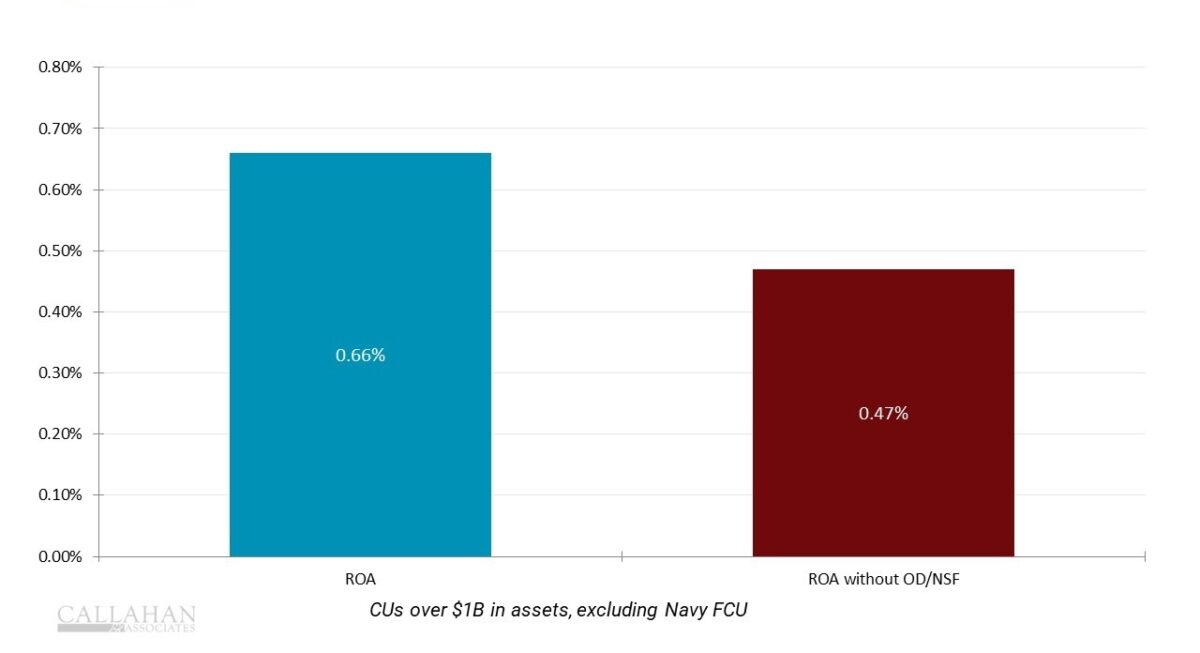Noninterest income at credit unions is up slightly over the past year, but that doesn’t change the fact that fee income industrywide has been on the decline for years. And the Biden administration’s war on so-called “junk fees” could depress those margins even further.
Here’s what credit unions need to know.
Why does this matter now?

New reporting rules from the National Credit Union Administration that took effect during the first quarter have made it easier than ever before to understand exactly how much institutions earn from fee income. The new rules only apply to credit unions with assets above $1 billion. That leaves out a substantial portion of the industry but means this information will be available for some of the nation’s highest-profile credit unions.
While these fees have always been in the public eye, “media and policymakers across the country have jumped on instances of NSF and overdraft fees that they deem to be unfair or predatory,” explains William Hunt, director of industry analytics at Callahan & Associates. “This is an emotional topic, given that the members who are most likely to be hit by these [fees] are often the least likely to afford them. There’s a reason why they get a lot of attention by regulators, policymakers, and media outlets.”
The NCUA’s focus, adds Hunt, is the result of concerns around reputational and financial risk for the industry. And credit unions could eventually be expected to defend their fee policies to examiners using this data as a starting point.
What does the data say?
Revenue from NSF and overdraft fees plays a big part in the balance sheet. As of the first quarter, for credit unions above $1 billion in assets, ROA could drop nearly 20 basis points (to 0.47%) if those fees were eliminated. Those fees represent more than a quarter (28.66%) of total net income and just over 50% of fee income.
HOW NSF/OVERDRAFTS IMPACT ROA
FOR U.S. CREDIT UNIONS | DATA AS OF 03.31.24
© Callahan & Associates | CreditUnions.com

The issue is compounded by the fact that net interest margins have tightened and credit unions are barely covering their operating costs, which are rising faster than assets.
One note: The figures above only apply to credit unions with assets over $1 billion, but do not include Navy Federal Credit Union because its size makes it an outlier.
Will fee income eventually disappear entirely?
Probably not, but it’s important to note that the future of NSF and overdraft fees is cloudy at best. Industry leaders and trade groups are working with regulators to determine the best way to proceed, and it’s unlikely these fees will be eliminated – at least in the short term.
FEE INCOME OVER TIME
FOR U.S. CREDIT UNIONS
© Callahan & Associates | CreditUnions.com

For shops concerned about possible reductions in fee income, Hunt outlined two options. Improving operational efficiency by reducing costs but maintaining service levels can have a significant impact. Additionally, other noninterest income channels outside of NSF/overdraft fees can provide value to members while also bringing in vital revenue streams.
Banks have been moving in that direction for years, Hunt says, and credit unions are still playing catch up.
Want To Learn More About NCUA’s New NSF/OD Fee Reporting?
During this on-demand webinar, William Hunt, Callahan & Associates’ director of industry analytics, examines the latest data from the NCUA to shed light on what the data tells us – and what it doesn’t!

